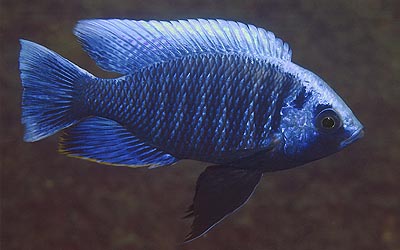| Protecting Malawi cichlidsby
Ad Konings / continued part 3—
To date, a total of 220 species of rock-frequenting cichlids have been recognized within park waters. The total water area protected under the National Park is estimated at about 7 km2, a mere fraction of the lake’s overall surface area, but about 25% of the lake’s cichlid species are represented within. The lake and its multitude of fish species have been around long before our own species appeared on the scene, and although the lake is governed by the jurisdiction of three different countries, none of them can responsibly claim owning the lake and its treasures. Lake Malawi is a natural treasure of world-magnitude and it should be treated as such. The Malawi government has taken upon itself the difficult task of protecting a section, an important section, of this treasure for generations to come. Their mission is not simple and/or straightforward. Besides the preservation of the lake’s riches there is also the need to alleviate poverty of the people that presently live along its shores. However, the cichlids of Lake Malawi National Park must never be exploited as a solution towards that predicament. |
 Poorly-regulated
and uncontrolled fishing is certainly a step in the wrong direction in
preserving the lake’s viability but also controlled or sustained usage
of resources in the park must be out of the question. The lake’s cichlid
diversity is not a resource that can be measured or controlled. Conservation
is the only option—indeed a difficult mission. Fishing in park waters is
not allowed within 100 meter of the shore and although this was well conceived
on paper, in reality the Park lacks the manpower to oversee these regulations. Poorly-regulated
and uncontrolled fishing is certainly a step in the wrong direction in
preserving the lake’s viability but also controlled or sustained usage
of resources in the park must be out of the question. The lake’s cichlid
diversity is not a resource that can be measured or controlled. Conservation
is the only option—indeed a difficult mission. Fishing in park waters is
not allowed within 100 meter of the shore and although this was well conceived
on paper, in reality the Park lacks the manpower to oversee these regulations. |
